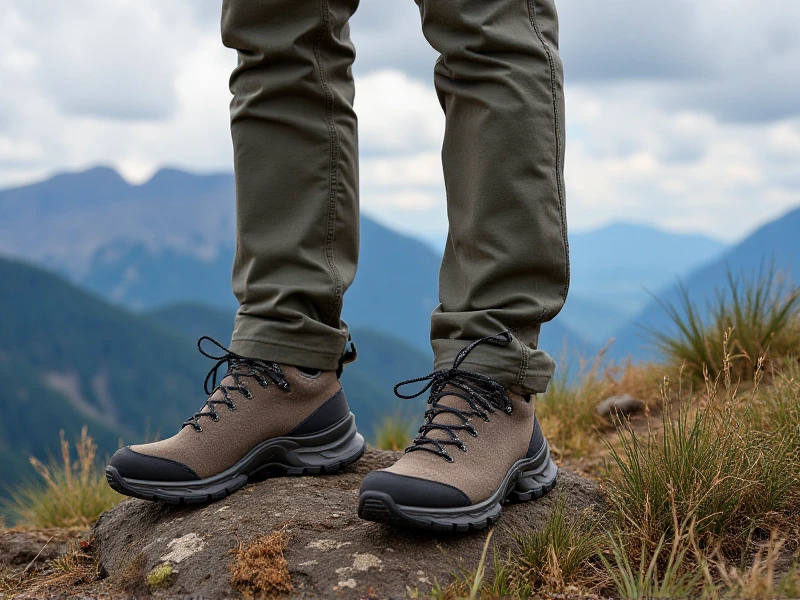The Ultimate Guide to Choosing the Best Men's Hiking Shoes for Your Next Adventure
2025-06-11

Finding the perfect pair of men's hiking shoes isn't just about comfort; it's essential for safety, performance, and truly enjoying the trails. Whether you're tackling rugged mountains, strolling scenic coastal paths, or exploring local woodland, the right footwear makes a critical difference. Forget blisters, aching arches, and unstable slips – our guide breaks down the key factors for selecting hiking gear that genuinely elevates your outdoor experience.
Why Investing in Quality Men's Hiking Shoes Matters
Think your regular sneakers are enough? Think again. Proper hiking shoes provide crucial features absent in everyday footwear:
Unbeatable Ankle Support: Especially important for medium/heavy packs or uneven trails. Look for mid-cut boots for stability if tackling significant elevations or carrying weight.
Superior Grip & Traction: Aggressive rubber lugs ("Vibram" isn't just a buzzword) bite into mud, dirt, wet rock, and loose scree, drastically reducing slips. Check lug depth and pattern – wider spacing sheds mud better.
Rugged Protection: Stiffer midsoles and protective toe/rubber rands shield your feet from impact (think roots and rocks).
Durability You Can Count On: Materials like full-grain leather, abrasion-resistant synthetics, and reinforced stitching stand up to abuse standard shoes can’t handle.
Finding Your Perfect Fit: More Than Shoe Size
Getting the "right fit" involves more than just measuring your foot:
1. Shop Later in the Day: Feet naturally swell. A morning fit might become a tight, blister-filled nightmare hours into your hike.
2. Wear Hiking Socks: Always try shoes on with the sock thickness you plan to hike in: Merino wool or synthetic is king for moisture management. Bring your own!
3. Toe Box Room: You need wiggle room! Ensure at least a half-inch (thumb's width) gap between your longest toe and the boot's end. Feet slide forward on descents.
4. Mind Your Heel: Minimal vertical heel slippage is okay (usually <1/4 inch), but any horizontal movement equals blisters immediately. Secure heel lock is non-negotiable.
5. Flex Point: The shoe should bend naturally with your foot's ball. Any stiffness before that point translates to discomfort and rubbing.
6. Walk Inclined: Ask for a store ramp or sturdy incline. Test how the boot grips on ascent and descent – does your foot slide on downs? Is there heel lift?
Matching Shoe Type to Terrain & Trip Length
Light Trail Shoes: Think "hiking sneakers." Ideal for groomed trails, short day hikes with a small pack. Low cut, more flexibility. Great breathability for warm, dry conditions. Keyword focus: light hiking shoes.
Trail Runners: Designed for speed over technical terrain. Lightweight, super grippy, but usually less protection/stability. Fantastic for runners transitioning to trails or fastpacking ultralight. Offers decent grip for men's hiking adventures requiring agility.
Hiking Boots: The all-rounder. Mid-cut provides good ankle support. Perfect for moderate terrain, longer distances, and packs with moderate weight. Available in waterproof/non-waterproof versions. Core use case for versatile men's hiking footwear.
Backpacking Boots: Heavy-duty, usually full leather or durable synthetics. Higher cut for maximum support carrying 30lbs . Rigid for rough terrain protection. Best for multi-day treks, technical scrambles, or heavy loads. Delivers stability on demanding trails.
The Waterproof Question: Gore-Tex vs. Breathability
Waterproof membranes like Gore-Tex offer true protection against streams, prolonged rain, or muddy trails. They also block wind. However, they sacrifice breathability, especially in hot climates – feet will likely sweat more.
Non-waterproof options made with airy mesh are far more breathable, drying quickly when wet but leaving you vulnerable to external moisture. Choose based on environment:
Consistently wet, cold, damp? Go Gore-Tex/eVent.
Primarily warm, dry trails, or hiking where quick-dry is key? Opt for the breathable route. Consider weather-sealed options.
Care is Key: Prolonging the Life of Your Investment
Even the top-rated men's hiking boots need attention to last:
Air Them Out: Never stuff into a gym bag. Remove footbeds; open laces to dry naturally after every excursion. Avoid direct heat sources that crack leather/damage glue.
Clean Gently: Brush off dried mud/dirt. Occasionally wipe with a damp cloth for deeper cleaning. Use specialized cleaners for leather/membrane fabrics.
Re-Waterproof When Needed: Over time, DWR (Durable Water Repellent) coatings wear off. Regularly applying boot-specific sprays or waxes (for leather) revitalizes protection and durability. Follow manufacturer directions closely.
Retire Gracefully: When the midsole feels dead (no cushion/support) or the tread is dangerously worn down, replace them. Outdated cushioning stresses joints; smooth treads slip.
Don't settle for discomfort. Your adventure deserves the perfect companion. By thoughtfully considering terrain, fit profile, weather needs, and care routine, you're investing in miles of memorable and secure exploration. The right pair of men's hiking shoes unlocks a better adventure, step by confident step. Ready to hit the trail?
Category: